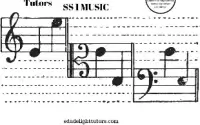Classification of Non-Living Things into Metals and Non-Metals
LESSON NOTE: CLASSIFICATION OF NON-LIVING THINGS INTO METALS AND NON-METALS
Subject: Basic Science
Class: JSS 1
Term: Second Term
Week: 4
Age: 10 – 12 years
Topic: Classification of Non-Living Things into Metals and Non-Metals
Sub-topic: Properties and Uses of Metals and Non-Metals
Duration: 40 Minutes
Behavioural Objectives
By the end of the lesson, students should be able to:
- Define metals and non-metals.
- Identify examples of metals and non-metals.
- Explain the properties of metals and non-metals.
- Differentiate between metals and non-metals.
- State the uses of metals and non-metals in daily life.
Keywords
- Metals
- Non-metals
- Malleability
- Ductility
- Conductivity
- Lustrous
- Density
Set Induction
The teacher displays different objects like a metal spoon, a plastic container, a wooden ruler, and a copper wire. The teacher asks:
- “What do you notice about these materials?”
- “Which of them can conduct heat or electricity?”
- “Which of them are shiny?”
- “Which can be bent without breaking?”
The teacher explains that these objects are classified as metals or non-metals based on their properties.
Entry Behaviour
Students have learned about living and non-living things in previous lessons.
Learning Resources and Materials
- Samples of metals (iron nail, aluminum plate, copper wire)
- Samples of non-metals (plastic cup, wooden ruler, rubber band)
- Charts showing differences between metals and non-metals
- Video or pictures demonstrating the properties of metals and non-metals
Building Background/Connection to Prior Knowledge
The teacher reminds students of their previous knowledge of non-living things and asks them to mention examples of materials around them that are made of metal or non-metal.
Embedded Core Skills
- Observation
- Critical Thinking
- Classification
- Communication
Reference Books
- Lagos State Scheme of Work
- Basic Science Textbook for JSS 1
- Teacher’s Guide on Non-Living Things
Instructional Materials
- Samples of metals and non-metals
- A magnet (to show that most metals are magnetic)
- Charts with examples and uses of metals and non-metals
Content
1. Definition of Metals and Non-Metals
- Metals are elements that are shiny, strong, and good conductors of heat and electricity. Examples: iron, copper, aluminum, gold.
- Non-metals are elements that do not have metallic properties. They are usually dull, brittle, and poor conductors of heat and electricity. Examples: wood, rubber, plastic, sulfur.
2. Properties of Metals
- Good Conductors – They conduct heat and electricity (e.g., copper wires).
- Lustrous (Shiny) – They have a shiny surface and can be polished (e.g., gold, silver).
- Malleable – They can be hammered into thin sheets without breaking (e.g., aluminum foil).
- Ductile – They can be stretched into wires (e.g., copper wires).
- Strong and Hard – They have high tensile strength and are used in construction.
- Sonorous – They produce a ringing sound when struck.
- High Density – They are generally heavy due to their compact structure.
- High Melting and Boiling Points – They require high temperatures to melt.
3. Properties of Non-Metals
- Poor Conductors – They do not conduct heat or electricity (e.g., wood, rubber).
- Not Lustrous – They are dull and cannot be polished (e.g., charcoal).
- Not Malleable – They break or crumble when hammered (e.g., chalk).
- Not Ductile – They cannot be stretched into wires (e.g., sulfur).
- Not Sonorous – They do not produce a ringing sound when struck.
- Low Density – They are usually light materials.
- Low Melting and Boiling Points – They melt at lower temperatures compared to metals.
4. Differences Between Metals and Non-Metals
| S/N | Metals | Non-Metals |
|---|---|---|
| 1 | Hard and strong | Generally soft except for diamond |
| 2 | Malleable (can be hammered into sheets) | Not malleable (breaks when hammered) |
| 3 | Lustrous (shiny) | Not lustrous (dull) |
| 4 | Ductile (can be stretched into wire) | Not ductile |
| 5 | High density (heavy) | Low density (light) |
| 6 | Good conductors of heat and electricity | Poor conductors of heat and electricity |
| 7 | High melting and boiling points | Low melting and boiling points |
| 8 | Can rust (e.g., iron) | Do not rust |
5. Uses of Metals
- Construction – Used in making bridges, houses, and water tanks.
- Manufacturing – Used in making vehicles, aeroplanes, and machines.
- Kitchen Utensils – Used in making pots, kettles, and spoons.
- Cutlery – Used for making knives, forks, and spoons.
- Jewelry – Used in making gold and silver ornaments.
- Electrical Wiring – Copper and aluminum are used for electrical wires.
6. Uses of Non-Metals
- Wood and Rubber – Used for making tool handles.
- Electrical Insulators – Used to cover electrical appliances (e.g., rubber and plastic).
- Furniture – Wood is used for making chairs, tables, and doors.
- Boat and Canoe Making – Wood is used in the construction of boats.
- Roofing – Used in making roofing sheets.
- Plastic Containers – Used for making bottles, cups, and storage items.
Evaluation Questions (Fill in the Blanks)
- Metals are ______ conductors of heat and electricity.
a) Poor
b) Good
c) Medium
d) Weak - ______ is an example of a non-metal.
a) Iron
b) Aluminum
c) Rubber
d) Copper - Non-metals are not ______.
a) Soft
b) Dull
c) Malleable
d) Brittle - ______ is a good example of a metal.
a) Wood
b) Sulfur
c) Iron
d) Rubber - Which of these can be used as an insulator?
a) Copper
b) Wood
c) Aluminum
d) Silver
Class Activity Discussion (FAQs and Answers)
- What are metals?
Metals are shiny, strong materials that conduct heat and electricity. - What are non-metals?
Non-metals are materials that do not have metallic properties. - Give two examples of metals.
Iron and copper. - Give two examples of non-metals.
Wood and plastic. - Why are metals used in making electrical wires?
Because they are good conductors of electricity.
Assessment (Evaluation Questions)
- Define metals and non-metals.
- List three properties of metals.
- State two properties of non-metals.
- In a tabular form, state four differences between metals and non-metals.
- State two uses of metals.
Conclusion
The teacher summarizes the lesson and marks students’ work, giving feedback.

